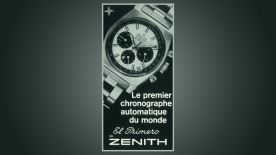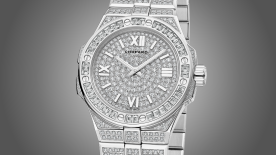Panerai has become such a permanent fixture in the world of watchmaking that it’s hard to remember just how significant its contribution to that world has been. Its ascension is closely bound up with the rise of dive watches in general, coupled with the fact that it established the whole vintage genre virtually single-handedly. Drawing on a history that ticked all the right boxes in the watchmaking of the 2000s, it had the right ingredients to deliver legitimacy, become desirable and expand. Founded in 1860, Orologeria G. Panerai & Co’s shop was situated on the Ponte alle Grazie, Florence; just like thousands of other small businesses of the time, it originally sold and repaired pocket watches. The Panerai family then embarked on an artisanal trajectory, becoming suppliers of measuring instruments to the Marina Militare in the 1910s. From 1915 onwards, the firm began supplying luminous combat sights. This led it to encounter another very recent military speciality: underwater warfare, a source of fascination to Europeans during World War 1 and the early days of submarines. Panerai’s first major step in this direction was to patent Radiomir in 1916. Radium was already known to have luminous properties, but Panerai’s patented mixture stabilised the element and made it glow for longer in the dark.
Foundations
The second step came in 1935, with the creation of an experimental series of watches destined for the divers of the Royal Italian Navy. Close inspection reveals that Panerai’s 2533 is in fact a bespoke adaptation of a Rolex pocket watch. It shares the same case, the same movement and the same principle of water resistance (to just 20 metres, the maximum depth at which its future wearers would be training). Almost by accident, Panerai had defined a unique style, look and feel: a black dial with four Arabic numerals and hands coated with its luminous material. Dive watches weren’t yet a thing as such, but this forerunner piece (which perfectly fulfilled its purpose) had all the essential ingredients of one. In 1938, the first fully-fledged Radiomir watch was born: 47mm in diameter, 15mm thick, with genuine welded lugs, a screw-down crown and a triple-layer ‘sandwich’ dial containing generous helpings of Radiomir. The watch met the needs of soldiers in active service — and thus had a genuine war record, the ultimate accolade for any self-respecting dive watch, tool watch or vintage watch.

Transformation
Between the 1940s and 1970s, Panerai continued to supply military measuring instruments, compasses and other procurement items. It wasn’t yet a brand as such — even if it was starting to look like one, not least in 1956 when it registered a landmark patent for its crown-guard bridge, which held the crown in place to ensure it stayed water-tight. The invention overcame the watch’s main weakness and created a distinctive visual identity — although only off and on, as Panerai dithered over its use. All this was to change with the arrival of an engineer named Dino Zei in 1972. Zei jump-started development work and began to create extreme prototypes. In 1993, he launched production runs of several hundred models based on designs dating back to the 1930s and 40s. In doing so, Zei established the neo-vintage style — and the in-your-face, oversize ethos of Panerai itself. Panerai’s story took another unexpected turn when Sylvester Stallone fell in love with its watches. In 1995, the actor entered negotiations with a view to the production of limited-edition watches under the Sly Tech name, offering undreamed-of promotional potential, but the hoped-for output was never achieved (a few rare timepieces have survived). The failure of the venture contributed to Panerai’s decision to sell up. In March 1997, Franco Cologni, CEO of Cartier and a key strategist within the Vendôme Group (later known as Richemont) spearheaded the buyout of Officine Panerai and handed over the reins to another Italian, Angelo Bonati.
Scaling the heights
Between them, the two men propelled Panerai to the heights of desirability. As a result of this radical shift in 1998-2002, the brand became immensely popular, selling everything in its inventory to aficionados and becoming a fashion a collectors’ phenomenon. Backed by its claim to the hallowed quality of historical legitimacy, carefully curated with just the right amount of storytelling, while establishing a unique and hitherto obscure style coupled with a creative policy focused on large, imposing watches, Panerai manoeuvred beautifully and caught every wave. It never lost sight of its diving identity, either, although it did extend the idea to cover the sea in general, invoking its history with marine chronometers and chronographs to do so. Panerai set up in its own premises in Neuchâtel in 2002, adding further substance in 2005 with the creation of its first in-house calibre, the P.2002. By then the brand was already a central feature in contemporary watchmaking. Its underwater origins, meanwhile, have been preserved — a suitable name here, the shape of a case there and of course a collection of genuine dive watches under the Submersible name. Besides all that, the fact remains that its entire ethos was born beneath the waves.
This year GMT Magazine and WorldTempus have embarked on the ambitious project of summarising the divers watch since 2000 in The Millennium Watch Book - Divers watch, a big, beautifully laid out coffee table book. This article is an extract. The Millennium Watch Book - Divers watch is available in both French and English here:






